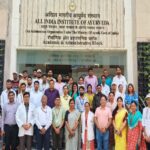India
healthysoch
New Delhi, October 07, 2020 :
- Patients with severe thermal burns have a considerable risk of death and morbidity.
- Check for evidence of respiratory distress and smoke inhalation injury, which is a common cause of death in case of acute burn injury.
- Laryngeal edema can develop suddenly.
- Fluid resuscitation and the need for transfer are guided by burn depth and size.
- Vascular collapse from burn shock is a crucial factor.
- It is important to initiate rapid, aggressive fluid resuscitation to reconstitute intravascular volume and maintain end-organ perfusion.
- The fluid requirement during the initial 24 hours of treatment is 4 mL/kg of body weight for each percent of total body surface area burned, given IV. Superficial burns are not included in this calculation. One-half of the calculated fluid need is to be given in the initial 8 hours; the remaining half is given over the next 16 hours.
- Burn patients may have been exposed to carbon monoxide and require high-flow oxygen.
- It is important to monitor urine output and to maintain hourly urine output at 0.5 mL/kg in adults.
- Cool and clean the burn wounds, but be careful to avoid inducing hypothermia.
- Any jewellery and any hot or burned clothing and obvious debris not adherent to the skin must be removed.
- Irrigation with cool water may be used.
- Topical antibiotics to be applied to all non-superficial burns.
- Give opioids for pain management; provide tetanus prophylaxis.
healthysoch






